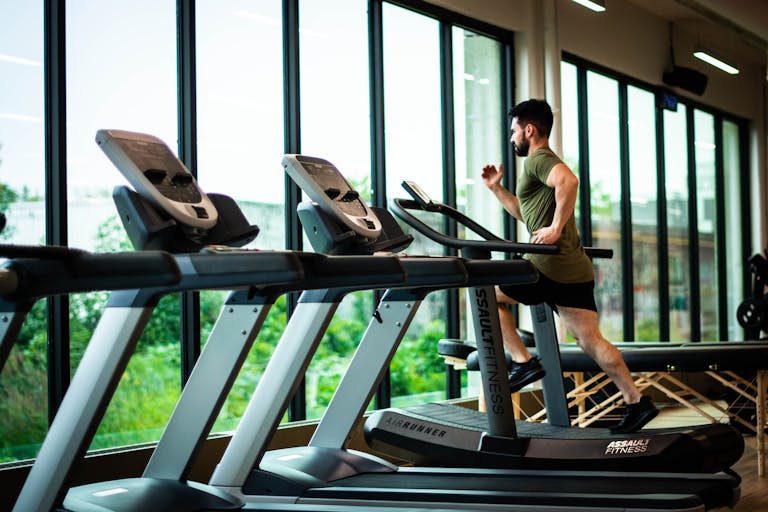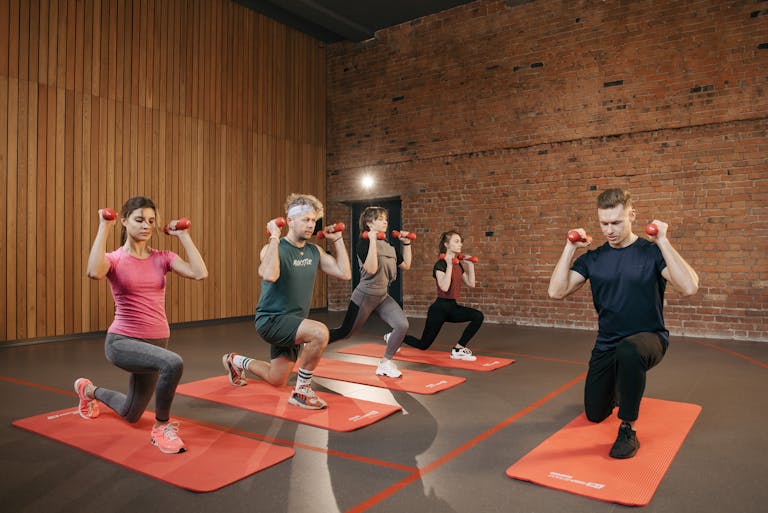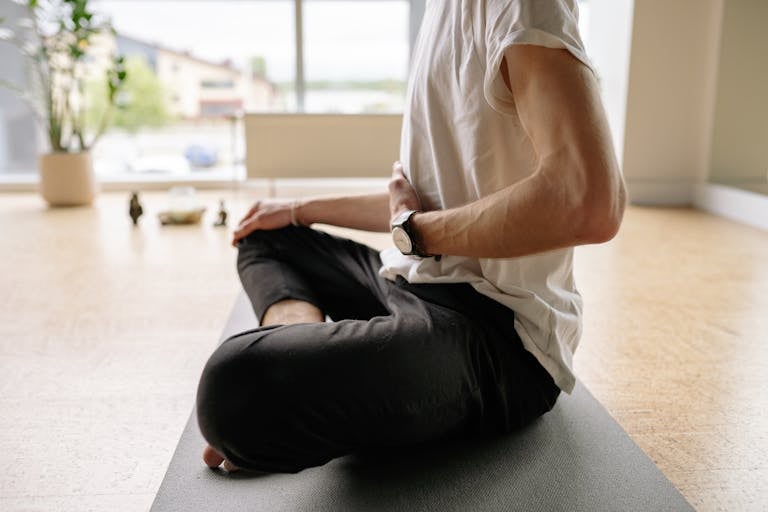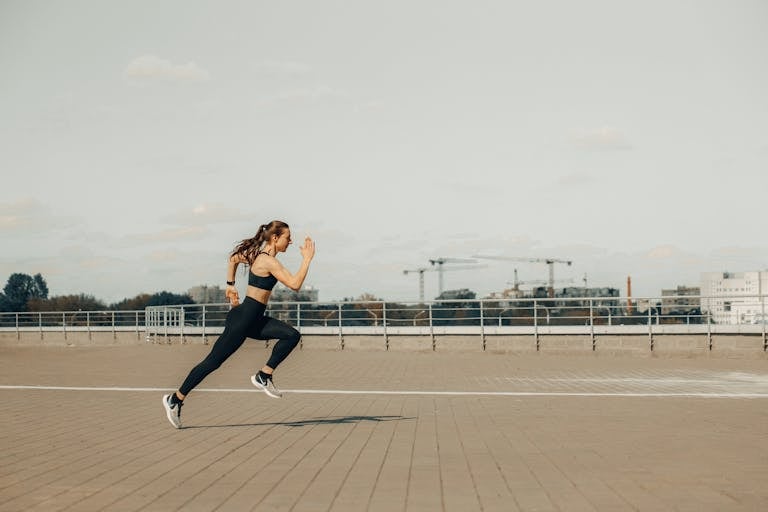Sleep is the foundation of optimal health and performance. Sleep is even more critical for athletes who push their bodies to the limit, affecting recovery, strength, and endurance. During sleep, your body goes through different stages that serve specific purposes in physical repair and mental restoration.
Professional athletes know this intimately. They invest time and resources into optimizing their sleep because they know recovery happens mostly during rest, not just during active recovery periods. Elite performers work with sleep specialists and follow strict routines to get the most out of each sleep cycle. A good night’s sleep is essential for muscle repair, injury prevention, and maximizing athletic performance.
This blog will dive into the science behind sleep stages and how they relate to muscle recovery. You’ll get insights and practical strategies from professional athletes that you can apply to improve your recovery and overall well-being.
Whether you’re training for a competition or just want to optimize your fitness routine, some athletes and individuals may need more sleep to support recovery and health. Understanding how sleep fuels performance can change your approach to recovery.
Why Sleep Matters for Athletic Performance
Sleep affects multiple systems that are essential for athletic performance. During rest, your body repairs damaged muscle tissue, replenishes energy stores, and strengthens your immune system. These processes are necessary for anyone physically active.
Research shows that sleep deprivation impairs athletic performance. Getting enough sleep is key to peak performance, as studies have found that athletes who get less than 7 hours of sleep per night experience slower reaction times, reduced accuracy, and impaired decision-making. Sleep deprivation can also reduce strength by 20% and endurance by 10-15%.
The immune system also relies heavily on sleep. Sleep duration is a key factor in supporting immune function and recovery, as poor sleep quality increases inflammation markers and reduces the production of infection-fighting cells.
For athletes, this means higher injury risk and longer recovery time between training sessions. Sleep is a natural performance enhancer that supports your body’s ability to adapt to training stress and build strength over time.
The Science of Sleep Stages
Sleep occurs in cycles that last 90-120 minutes, each with four stages. Each cycle has NREM and REM stages, often called the REM cycle, which repeats throughout the night. Understanding these stages explains why sleep quality matters as much as quantity. Sleep stages and cycles are often studied in sleep research to better understand sleep quality and architecture. Much of what we know about sleep stages comes from systematic reviews of sleep research.
Non-REM Sleep Stages
The first three stages are non-REM (Rapid Eye Movement) sleep. Stage 1 is the lightest stage of sleep and lasts only a few minutes as you transition from wakefulness.
Stage 2 accounts for 45% of total sleep time and involves decreased heart rate and body temperature. Sleep spindles play a role in memory consolidation and sleep stability. Slow breathing is a physiological change.
Stage 3, deep or slow-wave sleep, is the most restorative phase for physical recovery. During this deepest phase of non-REM sleep, muscle tone decreases significantly as part of the body’s restorative processes.
REM Sleep
REM sleep, also known as the REM stage or rapid eye movement (REM) sleep, typically starts 90 minutes after falling asleep and accounts for 20-25% of total sleep time. Rapid eye movements, vivid dreams, and increased brain activity characterize this stage.
Distinctive eye movements behind closed eyelids mark REM sleep. During REM sleep brain waves are more similar to those seen during wakefulness, more active than non-REM stages. Breathing rate is also more irregular during REM sleep than other stages. REM sleep is important for memory consolidation, learning and emotional processing.
For athletes, deep sleep is crucial because that’s when the body releases the most growth hormone. This hormone stimulates muscle repair, bone growth, and fat metabolism. Meanwhile, REM sleep helps consolidate motor skills and movement patterns learned during training sessions.
Muscle Recovery and Sleep
The relationship between sleep and muscle recovery involves several physiological processes during rest. Think of your muscles as a construction site that needs quiet hours to rebuild and strengthen after a day of heavy use.
Sleep reduces muscle damage and supports replenishing glycogen stores depleted during exercise. During deep sleep, your body produces up to 75% more growth hormone than during wakefulness. This hormone triggers protein synthesis, which repairs microscopic tears in muscle fibers caused by exercise.
Deep sleep also releases other anabolic hormones like testosterone and insulin-like growth factor, contributing to muscle growth and repair. Protein supplementation and protein powders like whey, soy, or casein can further support muscle recovery, especially when combined with adequate sleep. Creatine monohydrate is another supplement that aids recovery by reducing muscle damage and supporting glycogen replenishment.
Blood flow to muscles also increases during sleep, delivering essential nutrients and oxygen while removing metabolic waste products like lactic acid. This increased circulation speeds up the healing process and reduces muscle soreness.
Recovery is for the whole body, not just individual muscles, and athletes recover better when they allow for more rest between sessions. Exercise intensity and endurance exercise influence the length of the recovery period and the likelihood of sore muscles. Consistent quality sleep can reduce injury risk by 23% and significantly reduce recovery time between intense training sessions.
Poor sleep quality disrupts these recovery processes. When you don’t get enough deep sleep, growth hormone production decreases, protein synthesis slows, and inflammation markers increase. This creates a cascade effect that impairs performance and increases injury susceptibility.
Hydration and Recovery
Proper hydration is the foundation of effective muscle recovery and peak athletic performance. When you exercise, your body loses fluids and electrolytes through sweat, increasing muscle soreness and, if not replenished, slowing recovery. Even mild dehydration can negatively impact your strength, endurance, and ability to bounce back after intense workouts.
To support muscle recovery, drink 17-20 ounces of water 2-3 hours before exercise and continue to hydrate with 7-10 ounces every 10-15 minutes during your workout. After exercise, focus on replacing lost fluids and electrolytes to help your muscles repair and reduce soreness. Incorporate foods rich in electrolytes like bananas, avocados, and nuts into your post-workout meals to further aid recovery.
Hydration does more than quench your thirst. It regulates body temperature, supports nutrient and oxygen delivery to muscle cells, and flushes out waste products contributing to muscle soreness. By making hydration a priority, you’ll not only speed up muscle recovery but also enhance your overall athletic performance.
Recovery Periods, Overtraining, and Sleep
Balancing intense training with recovery periods is key to muscle repair and long-term progress. Pushing your body without allowing enough time for rest can lead to overtraining which can result in decreased performance, longer recovery time and higher injury risk.
Sleep is the most powerful recovery tool. During deep sleep, also known as slow-wave sleep, your body ramps up muscle repair and growth. This stage of the sleep cycle is when most tissue rebuilding and hormone release occurs, making it critical for athletes. REM and NREM sleep also play a vital role in restoring your body and mind so you’re ready for your next training session.
To maximize recovery, aim for 7-9 hours of quality sleep each night. Listen to your body and don’t hesitate to take rest days when needed—pushing through fatigue can backfire and set you back. By prioritising sleep and structured recovery time, you’ll support muscle repair, reduce injury risk, and keep your performance on track.
Age and Recovery: How Sleep Needs Change Over Time
As we age, our sleep patterns and recovery needs change. Older adults tend to spend more time in light sleep and less in deep sleep, impacting muscle recovery and overall sleep quality. This shift in sleep cycles, combined with a higher risk of sleep disorders like obstructive sleep apnea, can make achieving restorative rest harder for optimal health and athletic performance.
Sleep disorders like sleep apnea are more common in older adults and can disrupt the deep sleep stages crucial for muscle repair. Poor sleep quality slows muscle recovery, weakens the immune system, and increases muscle pain or soreness after physical activity.
To counter these challenges, older adults should focus on good sleep hygiene: maintaining a consistent sleep schedule, creating a relaxing bedtime routine, and limiting caffeine and screen time in the evening.
Prioritizing physical activity during the day can also help improve sleep quality at night. By addressing sleep issues and prioritising recovery, older adults can continue supporting muscle recovery, maintaining athletic performance, and promoting optimal health as they age.
Sleep Practices of Professional Athletes
Elite athletes treat sleep as seriously as their training and nutrition programs. Many professional sports teams now employ sleep specialists and have detailed sleep protocols for their athletes. Many athletes also work with a physical therapist to optimize recovery and prevent injuries.
NBA players like LeBron James reportedly sleep 12 hours a night during the season, while tennis champion Roger Federer says he gets 12 hours of sleep whenever possible. These athletes know sleep is a competitive advantage that can’t be replaced by any supplement or training method.
Professional athletes use several optimization tools to maximize sleep quality. Blackout curtains block out light pollution that can disrupt melatonin production. White noise machines or earplugs block out disruptive sounds. Many athletes use weighted blankets, which increase serotonin and melatonin production and reduce cortisol levels.
Temperature regulation is another key area of focus. Many pro athletes keep their bedrooms between 65-68°F (18-20°C) and use cooling mattress pads or climate-controlled beds. Some even wear blue-light blocking glasses in the evening to prevent screens from interfering with natural circadian rhythms. Older athletes or those with intense training schedules may need more rest to support recovery.
How to Apply These Strategies to Your Life
Create a Sleep-Friendly Environment
Your bedroom environment has a big impact on sleep quality. Use blackout curtains or an eye mask to make your room as dark as possible. Even small amounts of light can suppress melatonin production and disrupt sleep cycles.
Minimize noise with earplugs, a white noise machine, or a fan. If you live in a noisy area, consider using a smartphone app that generates consistent background sounds. Keep your bedroom temperature between 65-68°F. Cooler temperatures promote deeper sleep by mimicking your body’s natural temperature drop during rest. A calm sleep environment can also help regulate blood pressure at night.
Invest in a comfortable, supportive mattress and pillows that maintain proper spinal alignment. Memory foam mattresses can help distribute body weight evenly and reduce pressure points that might wake you up at night.
Establish a Consistent Sleep Schedule
Going to bed and waking up simultaneously every day, including weekends, helps regulate your circadian rhythm. This internal clock controls when your body releases sleep-promoting and wake-promoting hormones. Irregular sleep patterns can contribute to circadian rhythm disorders, which can negatively impact sleep quality and be associated with conditions like depression, aging, brain injuries, and medication effects.
Create a wind-down routine that starts 30-60 minutes before bedtime. This might include reading, gentle stretching, meditation, or a warm bath. Avoid stimulating activities like intense exercise, work tasks, or emotional conversations close to bedtime. Limit screen time at least an hour before bed, as blue light can suppress melatonin production. If you must use a device, wear blue-light-blocking glasses or enable night mode.
Nutrition and Timing for Better Sleep
Certain foods can promote better sleep quality. Tart cherries are a natural source of melatonin, while foods rich in magnesium, like almonds, spinach, and dark chocolate, can relax muscles and calm the nervous system. Turkey contains tryptophan, an amino acid that promotes sleepiness.
Chamomile tea has mild sedative effects and can be part of a wind-down routine. Avoid large meals within 3 hours of bedtime, as digestion can interfere with sleep. Also, limit caffeine intake after 2 p.m., as it can stay in your system for 6-8 hours.
Alcohol can make you feel drowsy initially, but it negatively affects sleep architecture, disrupts the overall sleep cycle, and reduces REM sleep quality. If you do choose to drink alcohol, do so several hours before bedtime to minimize its impact on sleep.
Specific sleep disruptions, like periodic limb movement disorder, can also interfere with sleep quality and recovery.
Track and Optimize Your Sleep
Wearable devices and smartphone apps can provide valuable insights into sleep patterns. Many athletes use devices that track sleep stages, heart rate variability, and sleep efficiency to identify areas for improvement. Monitoring sleep patterns can also help detect symptoms of a potential sleep disorder, like disrupted sleep architecture or reduced restorative deep sleep, which may require further evaluation.
Popular options include fitness trackers that monitor movement and heart rate or smartphone apps that use sound analysis to estimate sleep stages. Some advanced devices can even track room temperature, humidity, and light levels to help optimize your sleep environment.
Use this data to identify patterns and make adjustments. For example, if you notice poor sleep quality when you exercise late in the evening, try moving workouts earlier in the day. To develop personalized optimization strategies, track how different foods, drinks, or activities affect your sleep.
Improve Your Recovery Through Better Sleep
Understanding sleep stages and their connection to muscle recovery is a powerful tool for enhancing performance and overall well-being. The strategies used by professional athletes aren’t just for elite competitors—they’re evidence-based approaches that anyone can implement to improve their recovery and achieve their fitness goals.
School-aged children also experience unique sleep patterns and may require different sleep strategies to support their development and wellbeing. Sleep isn’t a luxury; it’s necessary for optimal physical and mental performance. The deepest stage of sleep, slow-wave sleep, is characterized by delta waves and is especially important for physical and cognitive recovery. You can tap into the same recovery benefits that professional athletes do by creating a sleep-friendly environment, having a consistent sleep schedule, optimising your nutrition timing, and tracking your progress.
Start implementing these sleep optimization strategies tonight. Choose one or two areas to focus on, such as your bedroom environment or bedtime routine. Small changes can make a big difference in how you feel and perform. Remember you can wake up from the deepest stage of sleep and experience sleep inertia a period of grogginess or confusion that can last around 30 minutes.
Ready to take your recovery to the next level? Join our Get Healthy Squad for more nutrition, exercise, and wellness tips to support your health goals.
Medical Disclaimer:
This content is for informational purposes only and is not intended as medical advice, diagnosis, or treatment. Always consult with a qualified healthcare professional before making any changes to your diet, exercise, or health routine. Never disregard professional medical advice or delay seeking it because of something you have read on this site.







